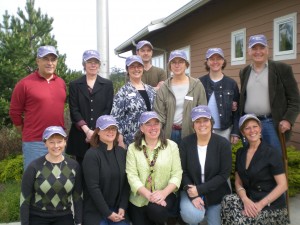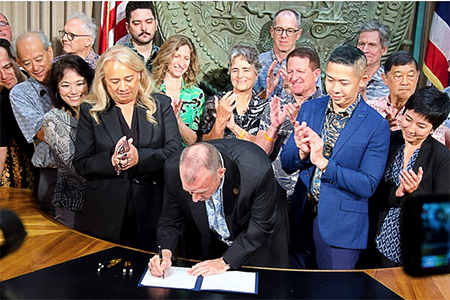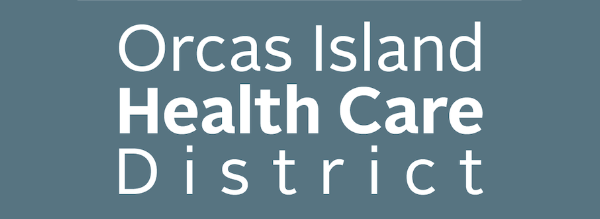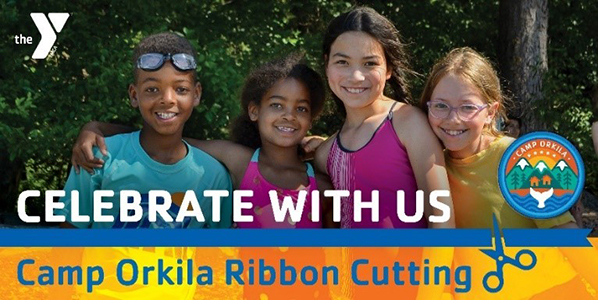
Endow Orcas Ceremony, May 2009, as island non-profits plan for growth. From left, back row: Joe Cohen ( OICF and Endow Orcas), Barbara Courtney (Orcas Center) , Diane Berreth (OICF), Pete Moe (Funhouse), Nanette Pyne (OICF), Kate Long (Children's House), Alan Smith (OPAL). Front row, kneeling: Michelle Reed and Janet Brownell (Orcas Island Education Foundation), Hilary Canty (OICF), Martha Farish Endow Orcas) Victoria Parker (Orcas Island Chamber Music Festival).
Beyond daily operations, an organization must consider the big picture, and plan how to nurture itself so that it can sustain its mission beyond the present day. Recognized non-profits, or “501(c)3s,” most often rely on outside funding to continue its mission, and in so doing, they take on another huge task: fundraising. From car washes and bake sales to dinners, auctions and pledge drives, Orcas Islanders are well-versed in fund-raising – and in giving.
The Orcas Island Community Foundation (OICF) mission is to “foster philanthropy to enhance and preserve the quality of life on Orcas Island.” Three years ago, an OICF Committee, called “Endow Orcas” was formed to assist island non-profits to “improve systems and skills related to planned giving and endowment building,” according to Joe Cohen, who spearheaded the Endow Orcas initiative.
An organization’s endowment is a fund that allows them to sustain and transform their operations and programs into the future. Most endowment “gifts” come through contributions given at the time of a person’s death, through his or her will or living trust. The Endow Orcas committee was set up to help non-profits engage with those making such “testamentary” plans.
Yesterday, Endow Orcas brought Sharon Holden, a development professional from Washington State University and the architect of many successful fund raising endeavors, together with 34 Orcas non-profit leaders and community members to address island concerns in building organizational sustainability, specifically through endowment-building and donor stewardship.
While focused on planned giving, Holden’s advice at the Oct. 8 presentation was applicable to most non-profit fundraising efforts, with specific pointers to “grow” contributors’ interest, involvement and donations.
In the workshop, Holden addressed many of the concerns of the Orcas non-profit leaders, which included:
- Connecting with the community
- Encouraging board involvement and dealing with “board fatigue”
- Approaching possible donors
- Linking services to the need for funding
- Engaging volunteers as donors
- Facilitating the generational shift in organizations
- Managing volunteers
- Balancing new energy with organizational stability
Holden frequently peppered the morning seminar with the importance of communicating vision and appreciating contributions.
She cited the fund-raising maxim, “If you want advice, ask for a donation; if you want a donation, ask for advice,” as an illustration of the need for people to understand the non-profit’s mission. Furthering that conversation, she emphasized that people seek connection, using storytelling to provide insight and connection into what organizations do to help people.
Holden defined the reasons people give to non-profits as:
1. Belief in the mission
2. Altruism
3. Respect for the organization’s CEO, staff, or leader
4. Fiscal stability of the organization – “You can only cry wolf once”
5. Respect for the institution
In speaking of the importance of an organization’s vision, Holden said its Board of Directors “should know and be clear about the vision of organization.”
She said that, in her work, she directly asked for donations only twice last year, but raised $800,000 through talking about the vision of her organization. “Then people want to help.” Visioning is not about money, Holden emphasized, “It’s about listening and prioritizing.
“Fundraising needs to be everybody’s business. Within your organization, create a culture of stewardship with staff and volunteers.”
Donor stewardship provides the connection whereby a donor can use the organization to accomplish goals they both have in common. The organization furthers the donor’s interests – and ability to give – to fulfill its mission.
Educate your board about three kinds of donations which are critical to your organizations’ sustainability and its life, Holden said, those categories being:
- Annual fundraising campaign gifts
- Capital campaigns or Special Gift (one-time)
- Transformational Gift – a contribution that “transforms the agency’s ability, a Legacy gift.”
She walked through the steps of donor stewardship:
1. Identifying those donors with whom a connection can be made
2. Planning the approach, at which level of funding may be requested
3. Engaging in conversation about the interests of the donor and the vision of the organization.
4. Negotiating the kind and level of contribution
5. Finalizing the donor’s response
6. Stewardship of the donor
In taking care of donors, Holden said that people need to know about the organization and also feel and experience its connection to them to be motivated to give. She related the importance of thanking and including donors to the cycle of fund-raising. She gave ideas for ways in which to thank donors for their support, repeating several times that the goal is to say “thank you” in seven different ways.
Elements in the appreciation process can be:
- Charge board members with communicating appreciation
- Invite donor to serve as a volunteer
- Acknowledge contribution on organizational literature and other media
- Arrange special donor events before a planned public event
- Host a recognition event where the organization’s vision is again shared
Organizational fund-raising should be planned, both in the immediate and long-term perspective, Holden said. Recognize that some donors are motivated by innovation and new programs, where others may be more galvanized by “end of campaign” contributions.
Holden addressed the pressures of time management all leaders face with three essential strategies:
- Discipline yourself to do what is most important to your organization – otherwise everyone else
- Insist on retreats where you focus on the big picture and evaluate where you are in the day-to-day progress towards your vision
- Always debrief after an event or campaign: assess what was effective, what was unsuccessful
She explained that the reasons for a rejection are usually because the amount was too much, the timing was wrong, or the donor’s enthusiasm did not jibe with the program or campaign request. However, she said that rejection itself presents an opportunity to engage the donor in the organization’s vision and how that can best be accomplished.
“Great stewardship is going back to your strategy and approaching the donors who feel so good about their gift, they want to give another one,” Holden said.
In thanking Holden, Cohen said, “Much was learned (and gained) by our community of non-profits. I do believe the lessons learned today will help OICF and many of the non profits take things to the ‘next level’ – and the leverage will be many fold.”
More about Endow Orcas
In 2008, OICF and Endow Orcas “graduated” eight non-profits into “Endow Orcas” status, meaning they had completed a vision statement for sustaining and developing their organizations for future needs, providing capital not only for daily operations and infrastructure for the non-profit’s programs, but also building a “savings account” or endowment. The eight organizations that have gained Endow Orcas certification are OICF itself and:
- Children’s House
- The Funhouse
- OPAL Community Land Trust
- Orcas Center
- Orcas Island Chamber Music Festival
- Orcas Island Education Foundation
- Orcas Island Medical Center Foundation
(Their case statements and plans of action can be viewed at https://oicf.us/about/endow-orcas )
**If you are reading theOrcasonian for free, thank your fellow islanders. If you would like to support theOrcasonian CLICK HERE to set your modestly-priced, voluntary subscription. Otherwise, no worries; we’re happy to share with you.**








Margie:
Thanks for a great synopsis of yesterday’s program. Your ability to capture the salient points in a compelling narrative has provided an excellent reference for all island non profits.
Hat’s off to you!